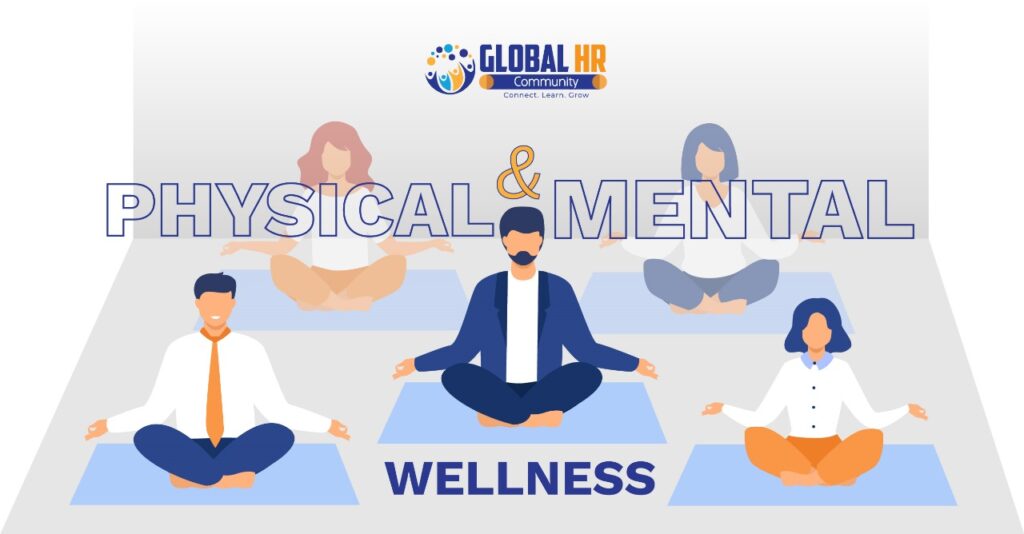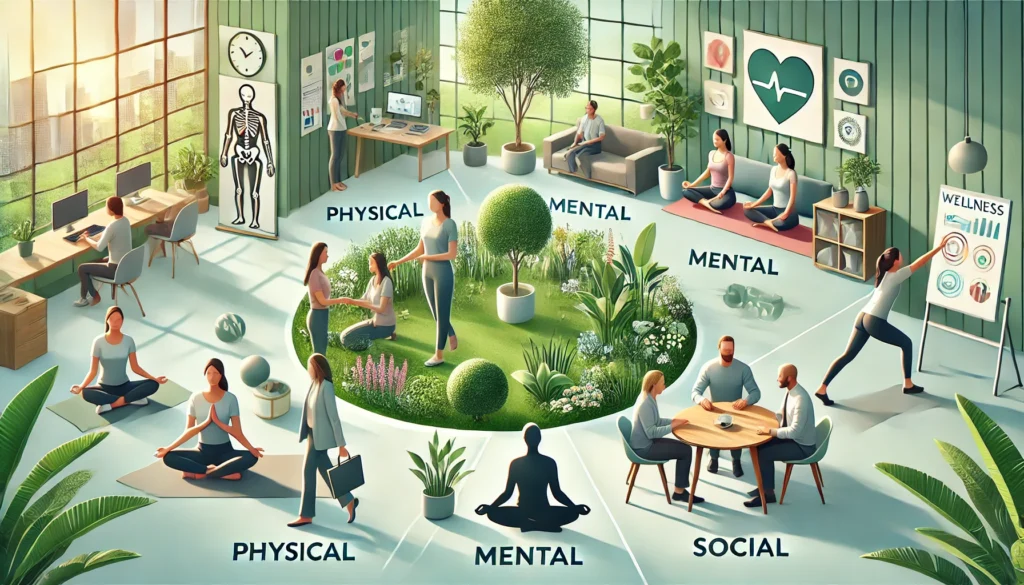The Interplay of Physical Fitness , Mental Fitness & HR : Fostering a holistic workplace strategy .

In today’s fast-paced world, the well-being of employees is paramount for the success of any organization. Both physical and mental fitness play a crucial role in maintaining a productive and engaged workforce. As human resources (HR) professionals seek to enhance employee wellness, understanding the interplay between physical fitness, mental fitness, and HR practices becomes essential.
Physical Fitness: The Foundation of Well-being
Physical fitness encompasses a range of activities that improve overall health and stamina. Regular exercise, proper nutrition, and sufficient rest are key components of physical fitness.
Benefits of Physical Fitness in the Workplace:
- Enhanced Productivity: Employees who engage in regular physical activity tend to have higher energy levels, improved concentration, and better time management skills.
- Reduced Absenteeism: Physically fit employees are less likely to suffer from illnesses, leading to fewer sick days and reduced healthcare costs.
- Improved Morale: Physical activity can boost mood and reduce stress, contributing to a more positive workplace atmosphere.
Mental Fitness: The Cornerstone of Emotional Well-being
Mental fitness refers to the state of being mentally and emotionally healthy. It includes the ability to manage stress, maintain focus, and adapt to change. Mental fitness can be nurtured through mindfulness practices, cognitive training, and fostering a supportive work environment.
Benefits of Mental Fitness in the Workplace:
- Increased Resilience: Mentally fit employees can better cope with challenges and recover from setbacks more quickly.
- Enhanced Creativity and Problem-Solving: A healthy mind is more likely to generate innovative ideas and solutions.
- Improved Interpersonal Relationships: Mental fitness promotes better communication, empathy, and teamwork among employees.
The Role of HR in Promoting Physical and Mental Fitness
Human resources professionals are uniquely positioned to champion initiatives that support both physical and mental fitness in the workplace. By integrating wellness programs into the company culture, HR can create an environment where employees thrive.
Strategies for HR to Foster Physical and Mental Fitness:
- Wellness Programs: Develop comprehensive wellness programs that include fitness challenges, mental health workshops, and nutritional guidance.
- Flexible Work Arrangements: Offer flexible working hours and remote work options to help employees balance work and personal life.
- Employee Assistance Programs (EAPs): Provide access to counseling and support services for employees dealing with personal or professional issues.
- Training and Development: Offer training sessions focused on stress management, resilience building, and mindfulness practices.
- Healthy Workplace Environment: Create a workspace that encourages physical activity, such as standing desks, on-site gyms, or designated walking paths.
Measuring the Impact
To ensure the effectiveness of wellness initiatives, HR should implement metrics to track progress and outcomes. Regular surveys, health assessments, and productivity analyses can provide valuable insights into the impact of physical and mental fitness programs.
Lets conclude by saying the synergy between physical fitness, mental fitness, and HR practices is essential for fostering a holistic approach to employee well-being. By prioritizing both physical and mental health, organizations can cultivate a more engaged, resilient, and productive workforce. HR professionals play a critical role in this process, developing and implementing strategies that support a balanced and healthy work environment. Investing in the well-being of employees is not only a moral imperative but also a strategic advantage that can drive organizational success.






Responses